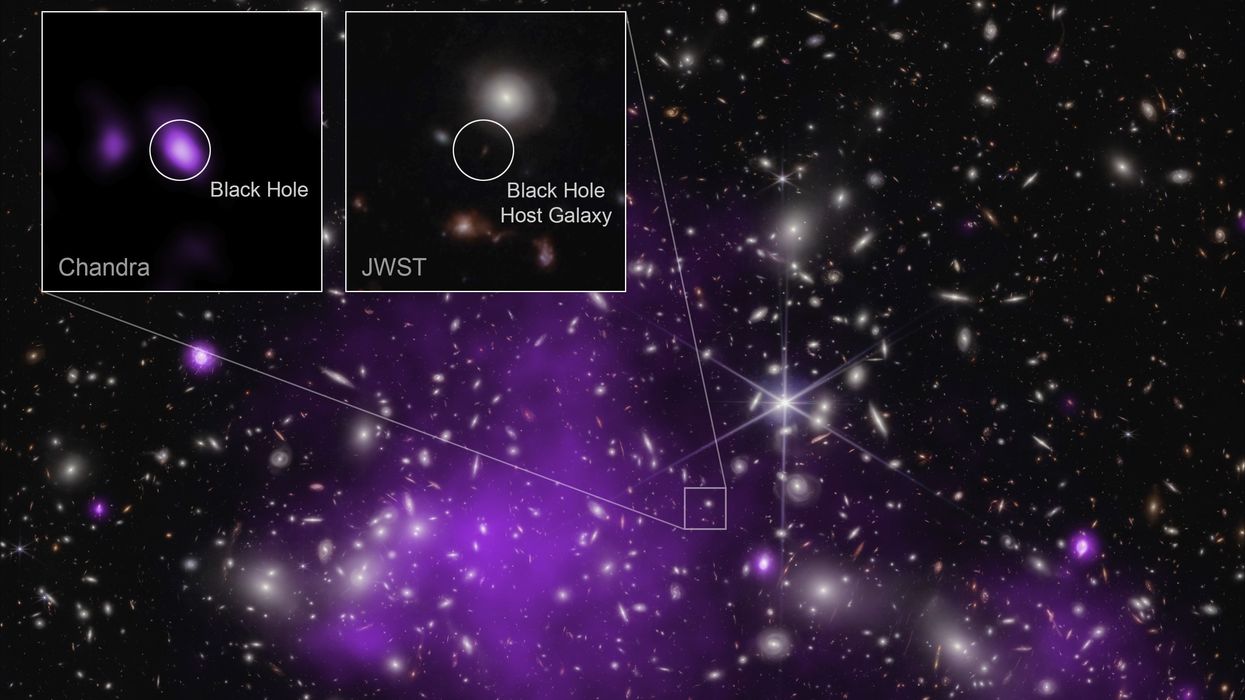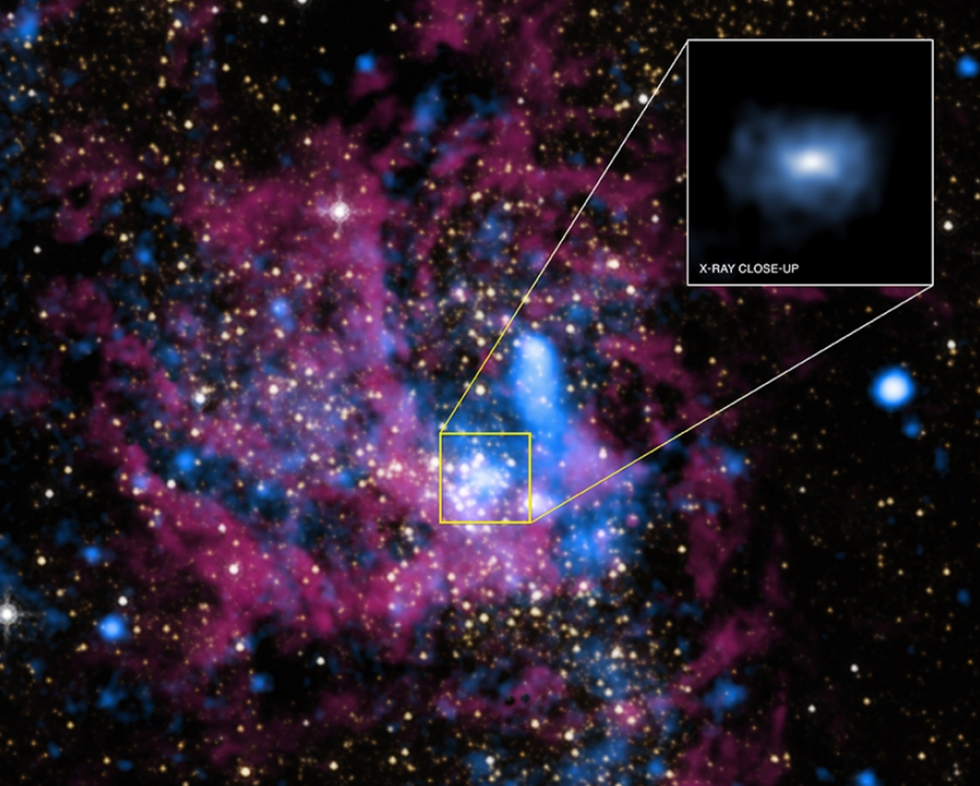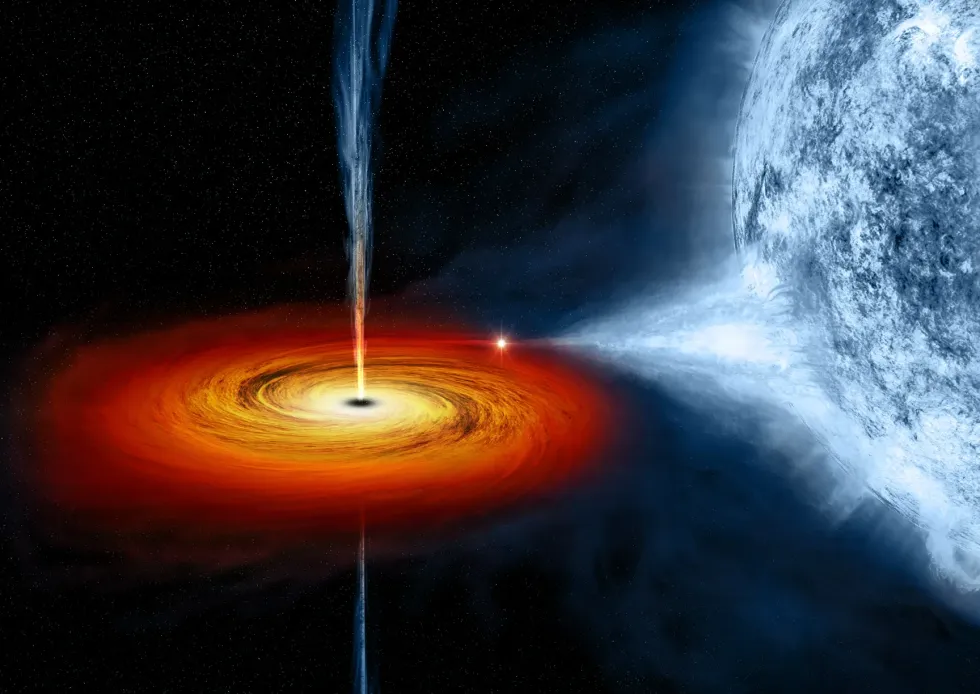Nasa discovers record-breaking black hole - and confirms it's still growing

A growing blackhole has been discovered by two powerful NASA space telescopes, according to researchers
|X-ray: NASA/CXC/SAO/Ákos Bogdán; Infrared: NASA/ESA/CSA/STScI; Image Processing: NASA/CXC/SAO/L. Frattare & K. Arcand

Astronomers claim the black hole formed within the first billion years after the Big Bang
Don't Miss
Most Read
A growing blackhole has been discovered by two powerful NASA space telescopes, according to researchers.
The finding - based on data from NASA's Chandra X-ray Observatory and the James Webb Space Telescope - could reveal how some of the first supermassive black holes formed.
NASA say the black hole was found in galaxy UHZ1 and was difficult to spot as it hid among a galaxy cluster about 3.5 billion light-years from Earth.
However, according to data by Webb, the young black hole appeared to be much further away, at 13.2 billion light-years.

The finding - based on data from NASA's Chandra X-ray Observatory and the James Webb Space Telescope - could reveal how some of the first supermassive black holes formed
|NASA
Chandra's astronomy research team followed up on the data and located X-ray-emitting superheated gas - a common defect for a developing supermassive black hole.
Astronomers claim black holes formed within the first billion years after the Big Bang.
Most galaxies have a supermassive black hole at the centre, according to experts how they form and grew shortly after the Big Bang is still unknown.
"There are physical limits on how quickly black holes can grow once they’ve formed, but ones that are born more massive have a head start," study co-author Andy Goulding of Princeton University told Fox News.
LATEST DEVELOPMENTS:
"It's like planting a sapling, which takes less time to grow into a full-size tree than if you started with only a seed."
The Sun's mass is used as a measurement for black holes and is commonly referred to as "solar mass."
Authors of the study say they have found "strong evidence" that the newly discovered black hole was born massive - estimated to be between 10 and 100 million Suns.
In 2017, a similar theory by Yale University astronomer Priyamvada Natarajan for an "Outsize Black Hole" forming from the collapse of a massive cloud of gas, was published.

Authors of the study say they have found "strong evidence" that the newly discovered black hole was born massive - estimated to be between 10 and 100 million Suns
|NASA
Natarajan said: "We think that this is the first detection of an 'Outsize Black Hole' and the best evidence yet obtained that some black holes form from massive clouds of gas.
"For the first time, we are seeing a brief stage where a supermassive black hole weighs about as much as the stars in its galaxy, before it falls behind."
The research team plans to use more data from Webb and other telescopes to investigate further.










